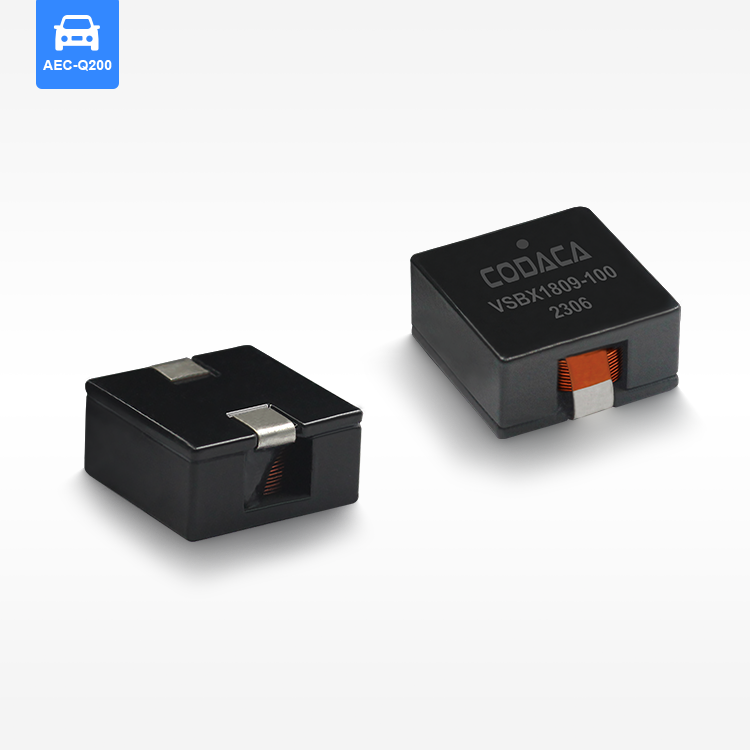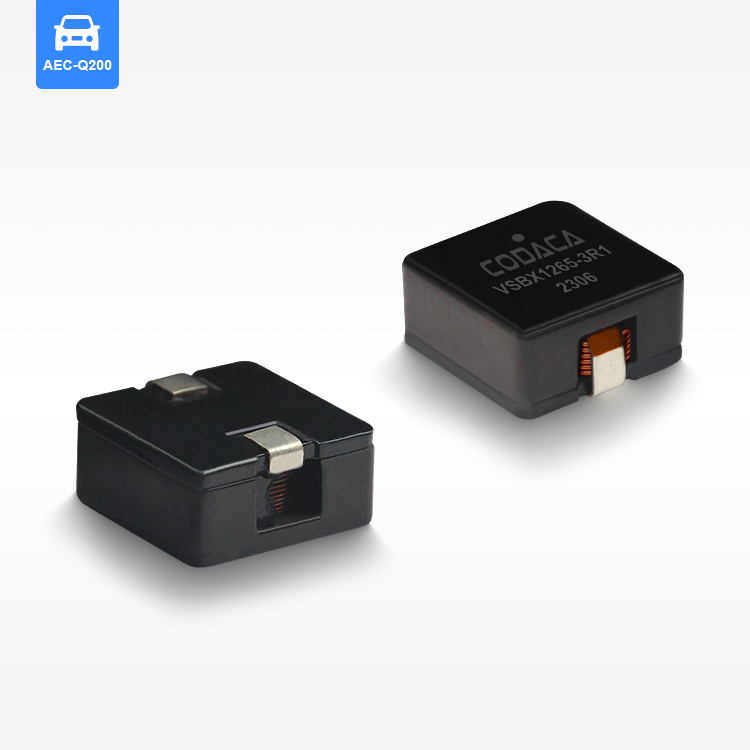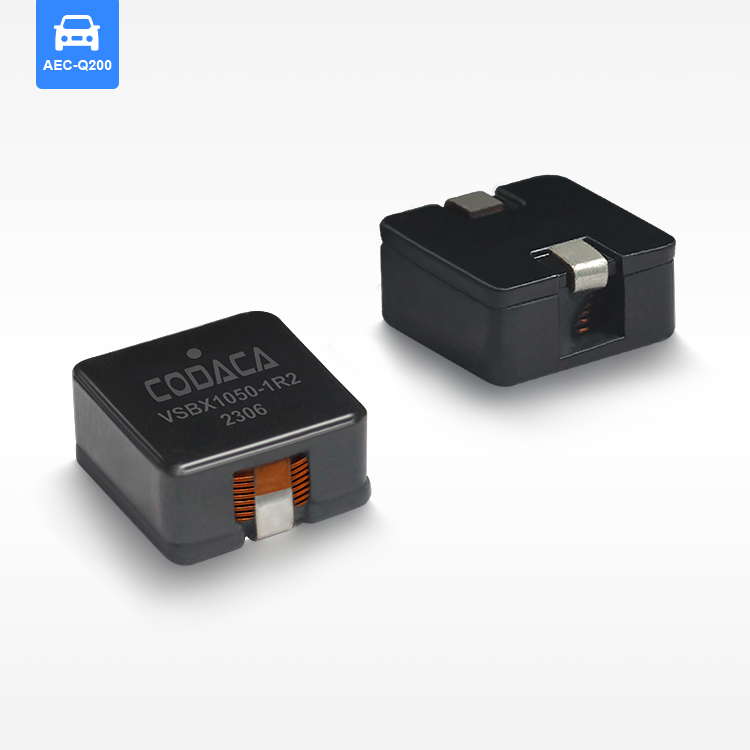Understanding Automotive Grade Requirements for Power Inductors
AEC-Q200 Compliance and Certification
AEC-Q200 is an essential industry standard for automotive components, ensuring products meet high-quality, reliability, and safety thresholds. This certification involves stringent testing procedures such as thermal cycling, mechanical shock, and vibration tests to assess a component’s resilience and functionality under various stress conditions. Compliance with AEC-Q200 is critical in preventing failures that could lead to costly recalls or safety hazards. For instance, some case studies show that a lack of adherence to this standard has resulted in significant performance failures in automotive applications. Consequently, Original Equipment Manufacturers (OEMs) heavily weigh AEC-Q200 certification in their sourcing decisions to guarantee the components they procure meet these rigorous demands.

Vibration Resistance in Harsh Environments
Vibration resistance is a crucial factor for automotive power inductors, especially in the increasingly demanding environments of electric vehicles (EVs). These components must endure harsh conditions characterized by constant vibrations, which standard testing methods, such as those outlined in MIL-STD-810, evaluate comprehensively. Known failures due to insufficient vibration resistance have led to compromised system integrity, highlighting the necessity for robust designs. Using high-quality materials and innovative design strategies enhances vibration resistance, ensuring the longevity and reliability of power inductors in automotive settings. This resilience is vital to prevent disruptions in vehicle performance caused by component failure.
Extended Temperature Range Demands
Automotive applications often operate within extended temperature ranges, requiring components like power inductors to perform reliably under extreme conditions. Temperature extremes can significantly affect inductor performance and longevity, as shown in industry studies focusing on thermal impacts. To meet these demands, manufacturers select materials and adopt design strategies tailored to withstand such challenging environments. Looking ahead, advancements in material science promise components capable of enduring even broader temperature ranges, marking a significant step forward for the automotive industry. These innovations will foster more reliable and efficient automotive systems, crucial for future advancements in vehicle technology.
Key Features of High Current Power Inductors
Core Material: Metal Alloy vs. Carbonyl Powder
The core material significantly influences the efficiency and performance of high current power inductors. Metal alloy cores offer high saturation, excellent thermal properties, and compact size, which makes them ideal for applications requiring high efficiency and compact designs. However, they can be more expensive and may emit more electromagnetic interference (EMI). On the other hand, carbonyl powder cores excel in providing stable performance under varying temperatures and are better at suppressing EMI. According to industry studies, metal alloy cores generally perform better in high-frequency applications, while carbonyl powder is preferred for its stable inductance over a broad temperature range. When selecting a core material, it is crucial to consider the specific requirements of the application, such as size constraints, thermal management, and EMI tolerance.
Saturation Current vs. Heating Current Ratings
Understanding saturation current and heating current ratings is vital in selecting high current power inductors. Saturation current is the maximum current the inductor can handle before its inductance starts to drop significantly, while heating current is the current level at which the inductor's temperature rises to a predefined limit. These ratings are crucial as they impact the inductor's performance in real-world applications. For instance, choosing an inductor with a saturation current lower than the operational current can lead to efficiency loss or failure. Conversely, exceeding the heating current can result in overheating, affecting longevity. Using graphs and data, industry experts highlight the importance of these ratings, particularly in automotive applications where both efficiency and reliability are paramount.

Design Considerations for Automotive Applications
Current Density and Thermal Management
In the realm of automotive applications, understanding current density is essential, particularly in the design of power inductors. Current density refers to the amount of current flowing through a conductor per unit area, which significantly impacts both the efficiency and reliability of electronic components such as inductors. High current density can lead to increased heat generation, making thermal management strategies crucial in automotive settings. One effective strategy to mitigate overheating is the use of heat sinks that effectively dissipate heat, coupled with proper airflow management to maintain optimal operating temperatures. Statistical data in automotive power applications suggests that failure rates significantly increase when components operate beyond their designed temperature ranges, further highlighting the importance of managing thermal stresses.
Footprint Optimization for Space Constraints
As automotive systems become increasingly complex, footprint optimization in power inductor design has taken center stage. Maximizing space efficiency without compromising performance is crucial, considering the limited space in modern vehicles. Common strategies to minimize the footprint include integrating components that combine multiple functions into a single, compact design. This approach not only saves space but also reduces the complexity of the system layout. For instance, a case study on a leading electric vehicle manufacturer demonstrated a successful reduction in board space by 30% through the use of integrated inductors. Such innovations in footprint optimization are pivotal in achieving high performance and reliability in automotive power systems without succumbing to space constraints.
Magnetic Field Interference Mitigation
Addressing magnetic field interference is a prominent concern in the design of automotive systems. Inductor performance is often affected by stray magnetic fields, which can disrupt the operation of sensitive electronic components. Various design techniques are employed to mitigate these interferences, starting with effective shielding and optimized layout considerations. For instance, shielding materials are strategically used to encapsulate inductors, minimizing external magnetic influences. Moreover, proper spacing and orientation on the circuit board reduce the likelihood of interference. An example is seen in a hybrid vehicle’s control system, where careful layout planning and the use of shielded inductors successfully eliminated the risk of performance degradation due to magnetic field interference, ensuring the seamless operation of critical systems.
Thermal Management and Reliability Factors
DC Resistance Impact on Efficiency
DC resistance plays a crucial role in determining the efficiency and thermal performance of power inductors. High DC resistance can lead to efficiency losses, resulting in increased heat generation, which may necessitate additional cooling solutions. For instance, a reduction in efficiency due to high DC resistance can significantly impact the performance metrics of power inductor applications. To illustrate, designers aim to keep DC resistance low; the CODACA VSBX series features low DC resistance that supports better thermal management and reduces energy losses in high-current scenarios. In automotive applications, this is crucial due to the high current requirements and compact spaces typically involved.

Thermal Derating Curves Analysis
Thermal derating curves are essential tools for understanding inductor performance at elevated temperatures. These curves depict how the current-carrying capability of an inductor decreases as temperature increases, providing insights into reliability under thermal stress. For instance, CODACA automotive grade high current power inductors VSBX series can function efficiently within a wide temperature range, serving as a reference for excellent thermal derating characteristics. By utilizing these curves, manufacturers can optimize their designs to balance performance and thermal stress, ensuring reliable operation. Having reliable thermal derating data allows for informed decisions on the use of heat dissipation mechanisms, leading to an overall improvement in the inductor's lifecycle.

Long-Term Performance Under Load Stress
Load stress testing is crucial for determining the long-term reliability of high-current power inductors. Continuous high-load conditions can subject inductors to thermal and mechanical stresses, potentially leading to premature failures. The rigorous testing protocols, such as accelerated life testing, simulate these conditions to evaluate durability over time, ensuring reliability. CODACA use of robust design with features like shielding and wide side terminal frames in the VSBX series ensures that these inductors perform well under extensive load stress, representing a best practice in the industry. Manufacturers like CODACA set a model for how effective load stress management can realize high-performance reliability in demanding applications.
Applications in Modern Automotive Systems
High-Current Charging Infrastructure
High-current power inductors are vital components in the charging infrastructure for electric vehicles, especially for fast-charging stations. These inductors help maintain efficiency and reliability during the charging process by mitigating the thermal and electrical loads associated with high current flows. Utilizing high current inductors ensures that the charging stations can deliver power efficiently, minimizing energy loss. As the demand for EV fast charging infrastructure grows, the role of such inductors becomes increasingly critical. Recent industry trends highlight the importance of robust charging solutions and technologically advanced inductors in meeting the expectations of rapid energy delivery and long-term reliability.
Implementation Best Practices
Prototyping and Testing Methodologies
Prototyping and testing are essential steps in the development of inductor designs for automotive applications. Best practices include creating detailed design models to predict electrical and thermal behaviors before physical prototyping begins. Incorporating advanced testing methodologies such as thermal and mechanical testing ensures product reliability and performance. These tests help simulate real-world conditions and evaluate how inductors respond to stress factors like heat and vibration. Success stories abound where iterative design and prototyping led to breakthrough automotive solutions, showcasing the value of thorough prototyping and rigorous testing.
Environmental Stress Testing Protocols
Environmental stress testing is crucial for validating the robustness of automotive components, particularly inductors. This testing involves exposing components to elevated temperatures, humidity levels, and mechanical shocks that mimic real-world automotive conditions. Standard protocols include thermal cycling and vibration tests to ensure stability and durability under harsh environments. Data from such testing illustrates how stress testing enhances product reliability and extends the lifespan of inductors used in automotive electronics, thereby improving overall performance in diverse operational scenarios.
Compatibility with Automotive PCB Materials
Ensuring compatibility between inductors and automotive PCB materials is vital for avoiding electronic failures. Common PCB materials in the automotive industry, such as FR-4 and polyimide, provide distinct electrical and thermal properties that influence inductor performance. Selecting inductors that align with these properties helps prevent issues like thermal expansion mismatches or electrical inefficiencies. Guidelines for choosing compatible inductors involve evaluating material thermal characteristics and electrical conductivity to match specific PCB applications, ensuring seamless integration and optimal performance.
FAQ Section
What is AEC-Q200 certification and why is it important?
AEC-Q200 certification is a standard that ensures automotive components meet high quality, reliability, and safety thresholds. It's crucial to prevent component failures that could lead to recalls or safety hazards.
How does vibration resistance impact power inductors in automotive applications?
Vibration resistance is vital for power inductors to endure harsh automotive conditions, such as those in electric vehicles, and to ensure reliability and longevity.
Why is core material selection critical for power inductors?
The core material affects efficiency, performance, and EMI suppression capabilities of power inductors, making it essential to choose the right one based on application requirements.
What is the significance of saturation and heating current ratings?
These ratings impact the efficiency and reliability of power inductors in real-world applications, making it crucial to select an inductor with suitable ratings for the specific use.
How do shielded inductors benefit automotive systems?
Shielded inductors minimize electromagnetic interference, improving system integrity and reducing noise in electronic control units.
Why is thermal management important in automotive applications?
Effective thermal management prevents overheating and efficiency losses, ensuring reliability and performance of power inductors in high-current scenarios.
How do DC-DC converters function in EV power systems?
DC-DC converters manage power flow between electronic modules, enhancing energy conversion efficiency and boosting overall vehicle performance.
Table of Contents
- Understanding Automotive Grade Requirements for Power Inductors
- Key Features of High Current Power Inductors
- Design Considerations for Automotive Applications
- Thermal Management and Reliability Factors
- Applications in Modern Automotive Systems
- Implementation Best Practices
-
FAQ Section
- What is AEC-Q200 certification and why is it important?
- How does vibration resistance impact power inductors in automotive applications?
- Why is core material selection critical for power inductors?
- What is the significance of saturation and heating current ratings?
- How do shielded inductors benefit automotive systems?
- Why is thermal management important in automotive applications?
- How do DC-DC converters function in EV power systems?

